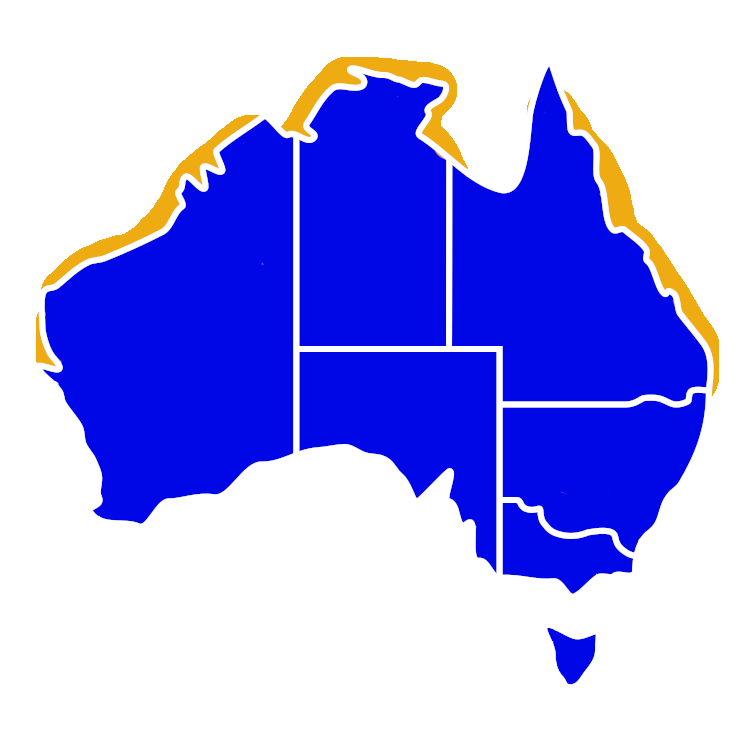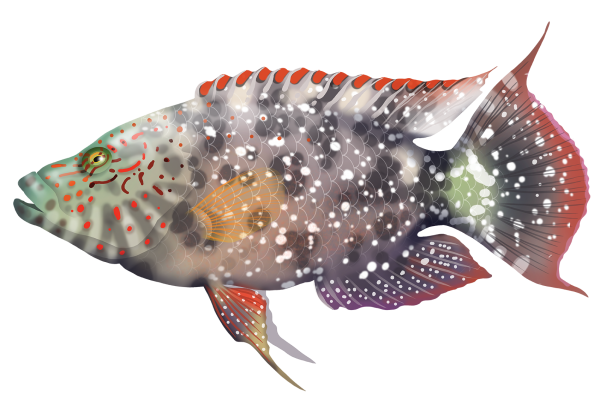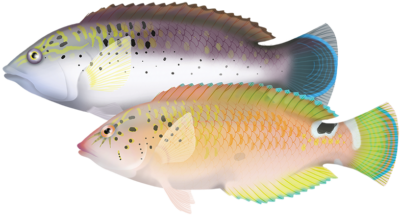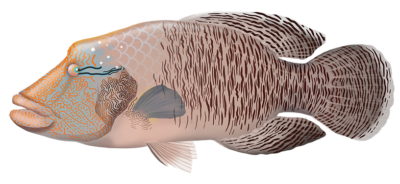Quick Facts
Distribution

Interesting Info
- Floral Maori Wrasse are primarily found along the north eastern coast of Australia, from the top of Queensland to the northern coast of New South Wales. They also inhabit the waters of Western Australia and the Northern Territory.
- They are a visually captivating fish known for their vibrant colours. Males display a floral-like pattern with shades of green, blue, and yellow on their bodies. Juveniles and females have a more subdued coloration with a pale green or brownish background. They have elongated bodies and sharp-toothed mouths, ideal for crush the shells of their prey.
- They are a carnivorous fish with a varied diet. They primarily feed on a variety of invertebrates, including small crustaceans, molluscs, and sea urchins.
- Their feeding behaviour plays a crucial role in controlling populations of certain invertebrates and maintaining a balanced ecosystem within coral reef environments.
- Floral Maori Wrasse are diurnal fish, meaning they are most active during daylight hours and rest or find shelter at night.
- Breeding habits of Floral Maori Wrasse involve complex social dynamics. They are protogynous hermaphrodites, which means they start their lives as females and later transition to males. This change occurs when the dominant male in a social group disappears or dies.
- The breeding season for Floral Maori Wrasse typically occurs during the summer months, between December and February, in the warm waters of the Great Barrier Reef and other reef systems.
- Their estimated average lifespan is between 5 – 7 years and up to 10 years.
Species Interaction
Recreational Fishing, Aquarium, Snorkeling & Diving
Floral Maori Wrasse are not specifically targeted for recreational fishing, they may be incidentally caught by anglers targeting other species. They are often a catch and release species in Australia. However they are highly sought after by aquarium enthusiasts, due to their colourful appearance and interesting swimming behaviour. They are also popular with snorkelers and divers as they are easy to spot and often swim near the reef, which allows for up-close encounters and excellent photo opportunities.
Scientific Classification
Kingdom: Animalia
Phylum: Chordata
Class: Actinopterygii
Order: Perciformes
Family: Labridae
Genus: Cheilinus
Species: Cheilinus Chlorourus
Conservation Status
The conservation status of the Floral Maori Wrasse in Australia is classified as “Least Concern” by the International Union for Conservation of Nature (IUCN). However, certain regional populations within their range may face localised threats and could require specific conservation measures.
Fish Taste Quality
Floral Maori Wrasse are a edible fish, however it is not widely consumed in Australia. It is often described as being similar to other reef fish species.
Taste Rating: 2/5
How to catch
Floral Maori Wrasse
Catch Difficulty: Intermediate
Tackle: Running Sinker Rig
Bait: Crab, Fresh cut flesh baits, Pilchards, Prawns, Squid, Worms
Technique: Keep bait close to the reef/structure
Popularity: Not targeted - Bycatch
Floral Maori Wrasse
As Aquarium Fish
Care Level: Moderate to difficult
Temperament: Semi-Aggressive
Diet: Carnivore
Reef Compatible: With caution
Minimum Tank Size: 150 gallons
Recreational Viewing
- Snorkeling & Scuba
Finding: Intermediate
Temperament: Peaceful
Location: Inner Reef, Outer Reef, Lagoon
Danger: None





